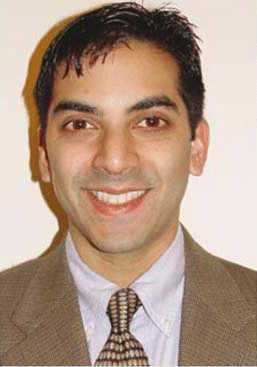TORONTO—Patients with head and neck squamous cell carcinoma (HNSCC) who have no history of tobacco or significant alcohol use appear to be more likely to present with earlier disease and smaller initial T-stage, but have worse than expected outcomes.
Explore This Issue
April 2006These were the findings from a retrospective chart review of 101 patients with head and neck cancer, which included a subset of patients who had no smoking or drinking history. Details of the study were presented here at the recent meeting of the Eastern Section of the Triological Society by Miriam O’Leary, MD, a resident in the Department of Otolaryngology at the Boston University School of Medicine (Mass.).
“As we know, alcohol and tobacco use are well established risks for the development of head and neck squamous cell carcinoma. However, there is a growing body of data on cancer patients who do not have these typical risk factors,” she said. Studies in the medical literature report that between 10% and 25% of head and neck cancer patients do not have a history of tobacco smoking or drinking.
“The big thing that we could pull out of the study was that 5 of the 17 people had none of the examined comorbidities. We couldn’t pull out any data that supported any significant exposure to any of those things.” – —Anand Devaiah, MD
This brings up the question of what other factors or comorbidities could contribute to the risk these patients have for developing the cancers or their outcomes.
A retrospective chart review was done of patients with new head and neck cancer diagnoses who presented between the years 2001 and 2004, and for whom follow-up data were available. Tumor sites included were the oral cavity, orolarynx, and hypopharynx—sites that are typically associated with tobacco and alcohol use.
Study Protocols
For the purposes of the study, significant tobacco use was defined as any history of regular tobacco smoking, and drinking was more than one alcoholic beverage a day. Anything less was considered non-use, and patients were included in the study.
During the study period a total of 101 patients presented with head and neck cancer, and of these a subset of 17 had no significant history of tobacco or alcohol used. “This proportion of approximately 17% correlates well with the published range of 10% to 25%,” Dr. O’Leary said.
The patients in the subset were an average age of 59 years (ranging from 21 to 80); ten were female, and over half the patients had early-stage or T1 tumors. More than half the tumors were in the oral cavity, while the rest were distributed between the oropharynx and larynx.

Leave a Reply